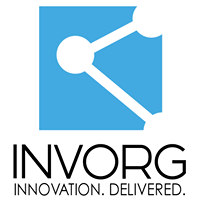3 common mistakes not-for-profit organizations make when undergoing digital transformation
By avoiding these three common mistakes, not-for-profit organizations can increase the likelihood of success of their digital transformation.

Photo by Joel Muniz on Unsplash
Introduction
Digital transformation can be a huge undertaking for any organization, but it can be especially challenging for not-for-profit organizations. They often have limited resources and staff, digital leadership who can develop a digital strategy and oversee the implementation, and they may not have the same level of experience with technology as their for-profit counterparts. That’s why it’s so important for not-for-profits to be aware of what might go wrong when embarking on a digital transformation journey, and how they can avoid those pitfalls. Here are three of the most common problems not-for-profit organizations face when undergoing a digital transformation.
1) Lack of clear goals and objectives
Digital transformation takes a lot of strategic planning, and it is important to remember that digital transformation is a journey, not an event, so there are plenty of opportunities for things to go wrong if the planning is not done correctly. One of the most common mistakes not-for-profit organizations make is not having a clear idea of what they want to achieve with their digital transformation. What are your goals and objectives? What pain points are you trying to address? What does success look like? Without a clear understanding of these things, it will be very difficult to measure the success of any digital initiatives put into place. It also makes choosing the correct digital solutions a major problem because without knowing what the end goal is, it is hard to understand what digital solutions will actually work to achieve that goal. The ultimate goal of a digital transformation is to help the organization achieve its goals and objectives. In order to ensure this is happening, it is important to establish clear success metrics from the beginning and track progress along the way, and in order to do that, you will need to identify clear goals and objectives right from the beginning.
2) Not properly assessing risks
Another common digital transformation mistake is not taking the time to properly assess risks. It is important to understand that digital transformation can come with some risks and it is essential to identify what those risks are before making any decisions. Not all digital solutions are created equal and some may pose more risk than others. In order to ensure success in your digital transformation, it is important to do your research, talk to experts, and research different digital solutions to understand how they will help your organization mitigate risk. Experts will be able to help your organization properly identify risks and advise on how those risks may impact your goals and objectives. It is important to remember that identifying risks does not mean that you should avoid digital transformation altogether, but it does mean that you need to be aware of the risks involved and take steps to mitigate them. The more prepared you are for the risks, the less likely you are to run into problems down the road.
3) Failing to get buy-in from all stakeholders
Stakeholders are a key part of any organization including not-for-profits, and digital transformation requires their buy-in. In order for digital transformation to be successful, it is important to get buy-in from all stakeholders involved. This means taking the time to explain what digital transformation is, what the goals and objectives are, and how it will impact the organization as a whole. It is also important to ensure that everyone understands the extent of the digital transformation and what will be required of them. Getting buy-in from all stakeholders can be a challenge, but it is essential for ensuring the success of the digital transformation. Be sure to take the time to understand what your stakeholders wish to see, and how digital transformation will help them achieve that. As we mentioned at the beginning of this article, the ultimate goal of digital transformation is to achieve the overall goals and objectives of an organization. If stakeholders can see that you have a clear plan, how the plan will help achieve the goals of the organization, and what will be required of them, you will have a much better chance of gaining their approval. If you do not have solid buy-in from all the stakeholders of an organization, it is not wise to proceed with the digital transformation, instead, focus on addressing their concerns and gaining their approval, once you have it, your transformation has a much higher chance of succeeding.
Conclusion
Digital transformation is a journey that requires careful planning and execution in order to be successful. Being aware of some of the most common problems not-for-profit organizations face when embarking on a digital transformation journey is the first step in avoiding them. With careful planning, risk assessment, and buy-in from all stakeholders, digital transformation can help your not-for-profit organization achieve its goals and objectives.
About the authors:
Hannah Hillier

Hannah is a professional content creator and writer. After graduation from the Public Relations program at Cambrian College, Hannah has gone on to start a successful freelance writing career. She is passionate about bringing words to life in a way that makes complicated topics more approachable. From website content to full articles, Hannah loves to find ways to communicate with any audience effectively. She currently lives and works in Sudbury Ontario.
Joseph Edward

Joseph founded INVORG focusing on a client-centric service delivery platform for innovating local organizations, not-for-profits, home and community support organizations, and small to medium-sized businesses. Joseph holds a Chief Information Officer Certification from Carnegie Melon University, USA, and from the US General Services Administration. He is an IT veteran with over 20 years of leadership in technology, including four years as CTO for the city of London.
